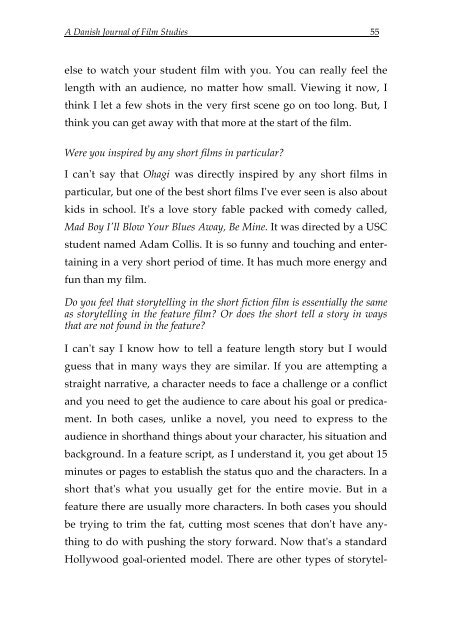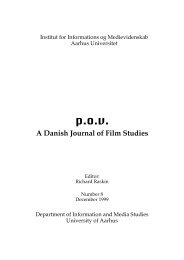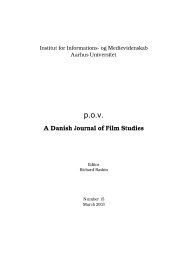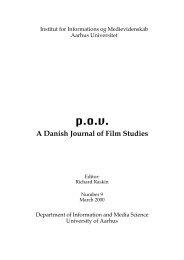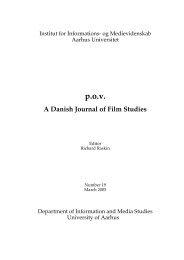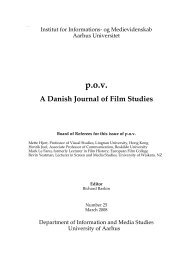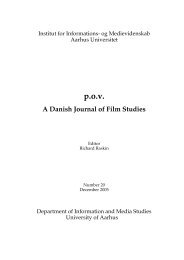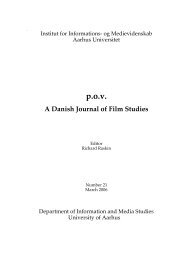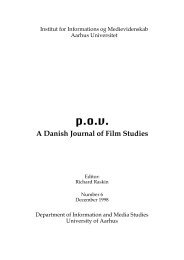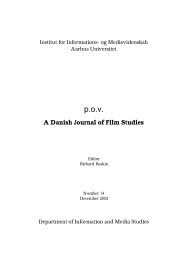The Face of Time - POV - Aarhus Universitet
The Face of Time - POV - Aarhus Universitet
The Face of Time - POV - Aarhus Universitet
Create successful ePaper yourself
Turn your PDF publications into a flip-book with our unique Google optimized e-Paper software.
A Danish Journal <strong>of</strong> Film Studies 55<br />
else to watch your student film with you. You can really feel the<br />
length with an audience, no matter how small. Viewing it now, I<br />
think I let a few shots in the very first scene go on too long. But, I<br />
think you can get away with that more at the start <strong>of</strong> the film.<br />
Were you inspired by any short films in particular?<br />
I can't say that Ohagi was directly inspired by any short films in<br />
particular, but one <strong>of</strong> the best short films I've ever seen is also about<br />
kids in school. It's a love story fable packed with comedy called,<br />
Mad Boy I'll Blow Your Blues Away, Be Mine. It was directed by a USC<br />
student named Adam Collis. It is so funny and touching and entertaining<br />
in a very short period <strong>of</strong> time. It has much more energy and<br />
fun than my film.<br />
Do you feel that storytelling in the short fiction film is essentially the same<br />
as storytelling in the feature film? Or does the short tell a story in ways<br />
that are not found in the feature?<br />
I can't say I know how to tell a feature length story but I would<br />
guess that in many ways they are similar. If you are attempting a<br />
straight narrative, a character needs to face a challenge or a conflict<br />
and you need to get the audience to care about his goal or predicament.<br />
In both cases, unlike a novel, you need to express to the<br />
audience in shorthand things about your character, his situation and<br />
background. In a feature script, as I understand it, you get about 15<br />
minutes or pages to establish the status quo and the characters. In a<br />
short that's what you usually get for the entire movie. But in a<br />
feature there are usually more characters. In both cases you should<br />
be trying to trim the fat, cutting most scenes that don't have anything<br />
to do with pushing the story forward. Now that's a standard<br />
Hollywood goal-oriented model. <strong>The</strong>re are other types <strong>of</strong> storytel-


